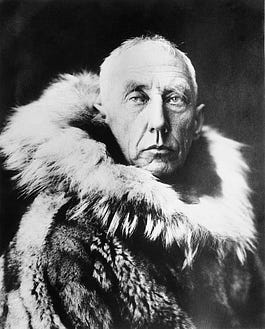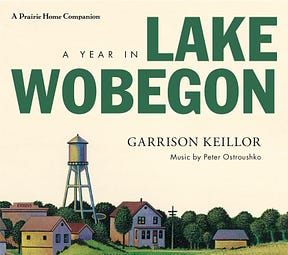|
 |
The Writer's Almanac from Thursday, December 14, 2006
"Crusoe" by George Bilgere, from The Good Kiss. © The University of Akron Press.
It was on this day in 1911 that the Norwegian explorer Roald Amundsen and his team became the first people ever to reach the South Pole on the continent of Antarctica.
As far as we know, Antarctica was the last continent on earth to be explored by people. No one knows for sure who saw it first, but a Polynesian legend from New Zealand tells of a man in a war canoe sailing south and discovering a frozen ocean. In 1774, the English explorer James Cook saw vast mountains of ice to the south when he sailed around the southern tip of South America, and he believed there was probably a land mass behind the ice.
The first people to really explore the edges of Antarctica were the seal hunters who began to slaughter the fur seals that gathered by the thousands on Antarctica's shores. The Englishmen Robert F. Scott and Earnest Shackleton were the first men to lead teams into the interior of Antarctica, and Scott went on to try to find the South Pole. He was followed by another explorer named Roald Amundsen, who had decided to join the quest at the last minute.
Amundsen's expedition was a full eight weeks behind Scott's, and when word got out that he was racing to beat the famous English explorer, most people thought Amundsen was crazy. But he had a secret weapon: a team of well-trained Greenland sled dogs. Scott had decided not to use dogs for transportation because, he said, "No journey ever made with dogs can approach the height of that fine conception which is realized when men go forth to face hardships, dangers, and difficulties with their own unaided efforts."
As a result of Scott's aversion to dogs, Amundsen's team arrived at the South Pole more than a month before Scott's team did. And Scott's team perished in a snowstorm on their way home.
It was on this day in 1900 that the physicist Max Planckpublished his theory of quantum mechanics, which is often considered one of the most radical scientific discoveries of the 20th century. At that time, physicists accepted the work of Isaac Newton without any criticism. They believed that the interactions between all physical objects, from atoms to planets, would be predicable and logical. But one thing that physicists couldn't quite understand was the way light worked.
Max Planck was working in a laboratory in 1900, heating up various substances and examining the color of light they emitted when they reached certain temperatures. He wanted to describe his results in mathematical terms, but no matter how hard he tried, his mathematical calculations didn't make sense. The only way he could fix the problem was to assume that light travels in little packets, like bullets, even though this seemed impossible. He published his calculations on this day in 1900, calling his theory about light "an act of desperation." He assumed that some future physicist would figure out what he had done wrong.
But five years later, Albert Einstein took Planck's theory of light seriously, and wrote his first major paper exploring the idea of light traveling in packets, which he called photons. Even though he became better known for his theory of relativity, it was Einstein's work expanding on Planck's original ideas about light that won him a Nobel Prize. Einstein later said, "I use up more brain grease on quantum theory than on relativity."
Be well, do good work, and keep in touch.®
CLICK HERE to order A Year in Lake Wobegon by Garrison Keillor (3 CDs)
Each monologue is culled from episodes of A Prairie Home Companion that aired between 2014 and 2016. As an added bonus, liner notes contain a poem for each month written by Garrison Keillor. Plus, between monologues you will hear music by Peter Ostroushko.
If you are a paid subscriber to The Writer's Almanac with Garrison Keillor, thank you! Your financial support is used to maintain these newsletters, websites, and archive. If you’re not yet a paid subscriber and would like to become one, support can be made through our garrisonkeillor.com store, by check to Prairie Home Productions, P.O. Box 2090, Minneapolis, MN 55402, or by clicking the SUBSCRIBE button. This financial support is not tax deductible.


